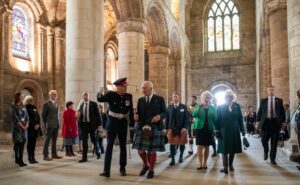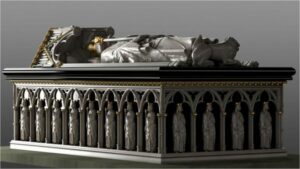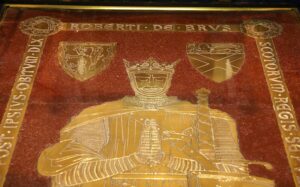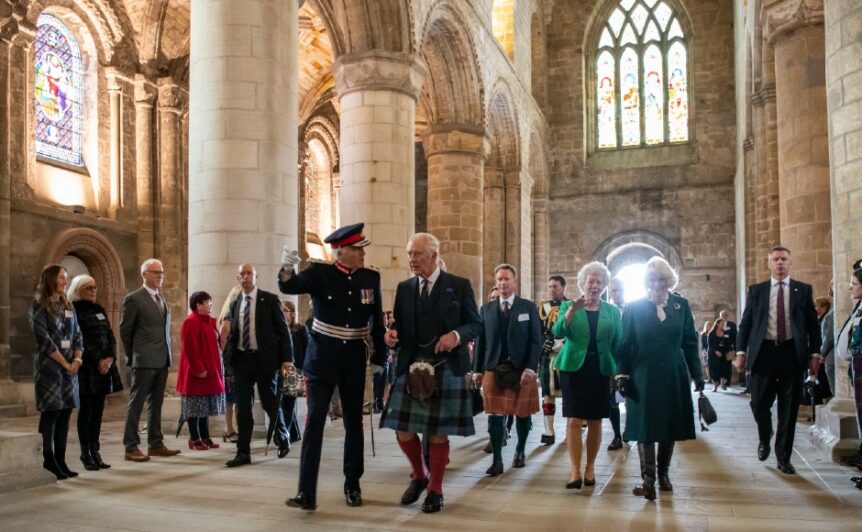Following a ceremony to confer the status of a city on Dunfermline, on 3rd October – the first official engagement of his reign – HM King Charles III accompanied by The Queen Consort visited the Abbey Church of Dunfermline. Lord Bruce was invited to attend the event as a Deputy Lieutenant in support of the Lord Lieutenant of Fife, Robert Balfour, where he was asked to give the Royal party a guided tour of King Robert’s tomb.

Photo Credit: Historic Environment Scotland.
The tomb lies near the position of the alter of the Romanesque church which was consecrated 950 years ago in 1072 at the behest of Queen Margaret, the Hungarian-born consort of Malcolm Canmore, King of Scots. After the death of Robert the Bruce in 1329, his body was brought from Cardross in the Vale of Leven to be buried at Dunfermline Abbey. A bespoke marble tomb, similar to the style of memorial adopted for the Kings of France, was ordered from Paris. Although no trace of this spectacular tomb survived the Reformation, a digital reconstruction of the tomb was created in 2015 from thirteen surviving fragments, indicating a highly elaborate and sumptuous structure.

Digital reconstruction of how Bruce’s tomb may have appeared. © The Centre for Digital Documentation and Visualisation
In February 1818 while clearing rubble from the choir of the medieval abbey, in preparation for building the Abbey Church, masons discovered a royal tomb which bore all the evidence of King Robert’s final resting place. Before his body was reburied a mould was formed of the skull, and several casts were made by the sculptor, William Scoular. In 1889, the 9th Earl of Elgin, 35th Chief of the Name of Bruce gifted a single slab of Byzantine porphyry to be laid over the site of the King’s burial, set with a contemporary brass relief. The following year the Bruce family gifted a fine pulpit carved from oak by Thomas Patterson, with additional sculptures provided by Thomas Beattie.
A cast of King Robert’s skull together with his sword of state are kept at Broomhall House.

Brass plate covering Robert the Bruce’s tomb in Dunfermline Abbey.

